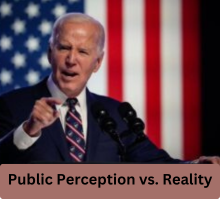
It’s time to talk about college tuition—specifically, how it might not be as daunting as you think. Many Americans believe the cost of higher education is spiraling out of control. But guess what? The latest data tells a different story. Let’s dive in and unpack these trends, shall we?
The Surprising Drop in Tuition Costs
Average In-State Tuition and Fees
For the average in-state student at a public university, the annual net tuition is now around $2,480. This number is a revelation for anyone who has been following the tuition hikes over the last few decades.
Comparison Over the Years
To put this in perspective, let’s look back at the numbers. Just a decade ago, in the 2014-15 school year, students paid approximately $4,140. That’s a staggering 40% drop in net tuition costs by 2024-25.
Adjusting for Inflation
Now, these figures account for inflation and include financial aid. It’s crucial to understand that while sticker prices may still appear high, the real costs after aid are significantly lower.
Breaking Down the Total Cost of Attendance
Room and Board Expenses
Tuition isn’t the only cost students face. Room and board can add substantially to the overall college expenses. In fact, while tuition costs have dropped, living expenses remain a significant portion of college budgets.
Other Associated Costs
Beyond tuition and living expenses, students must also consider books, supplies, and personal expenses. It’s essential to have a clear picture of the total cost of attendance to prepare adequately.
The Reality of Financial Aid
The Role of Grants and Scholarships
The financial aid landscape has improved, making college more accessible. Average grant aid per student at public four-year colleges rose from $8,000 in 2014 to $9,130 in 2024, when adjusted for inflation.
Average Financial Aid Packages
These grants and scholarships play a significant role in reducing the net costs for students. They ensure that many can afford to attend college without massive student loans.
Impact on Net Costs for Students
When you factor in this financial aid, the average in-state student pays far less than what the published tuition might suggest. This is an important consideration for families evaluating their college options.
National Trends in College Pricing
Price Decreases Across the Board
Recent reports indicate a trend of declining prices in higher education. It’s not just one university; many institutions are lowering costs to attract students amid declining enrollments.
The Effects of Enrollment Declines
As fewer students enroll in college, schools are feeling the pressure. This creates a buyer’s market where institutions compete for students, often leading to lower tuition rates.
The Sticker Price vs. Actual Costs
Why Sticker Prices Mislead Students
Many students and parents focus on sticker prices—the advertised tuition rates—without realizing that actual costs can be much lower after aid.
Case Studies from Elite Colleges
Even the most expensive colleges offer financial aid packages that can significantly reduce costs for qualifying students. This is why many families shouldn’t be deterred by high sticker prices alone.
Economic Factors Driving Tuition Changes
State Investments in Higher Education
State governments have started reinvesting in higher education after years of cuts during the recession. This increase in funding helps keep tuition costs in check for in-state students.
The Shift in Market Dynamics
With more families questioning the value of a degree, colleges are adjusting their pricing strategies. They can no longer assume students will enroll without considering affordability.
Public Perception vs. Reality
Common Misconceptions about Rising Tuition
Surveys show that nearly half of Americans expect college tuition to continue rising. This belief contrasts sharply with the reality of declining net costs for many students.
Survey Results on Public Expectations
According to the Federal Reserve Bank of New York, only 9% of people expect tuition to decrease. However, the data indicates a more complex picture, where inflation-adjusted prices are falling.
Also read: Fortnite DOWN: Discover the Exact Downtime Start Time
The Student Perspective
Borrowing Trends Among Students
More students are graduating without debt. In 2022-23, nearly half of students at public universities completed their degrees without needing to take out loans.
Why More Students Are Graduating Debt-Free
This shift can be attributed to rising financial aid and a growing awareness among students about managing college expenses wisely.
The Future of College Costs
Expectations for Future Tuition Rates
Looking ahead, it’s difficult to predict precisely where tuition will go. However, the trends suggest continued affordability for many students, especially if state funding remains stable.
Potential Changes in Financial Aid Policies
As colleges adapt to economic conditions, we might see shifts in financial aid policies aimed at attracting more students, particularly from low-income backgrounds.
Also read: Peanut the Squirrel: The Emotional Story Behind His Euthanasia
FAQs
-
What is the average cost of attending public college?
- The average net tuition for in-state students is around $2,480 per year, but total costs can vary based on room and board.
-
How has financial aid changed over the years?
- Grant aid has increased significantly, with average aid per student rising to about $9,130 in inflation-adjusted dollars.
-
Why do some students graduate debt-free?
- More students are receiving financial aid and scholarships that cover their costs, allowing them to graduate without loans.
-
What factors affect tuition prices in different states?
- State funding, enrollment trends, and the pricing strategies of individual institutions play a significant role.
-
How can students navigate college expenses effectively?
- Understanding the true costs, seeking financial aid, and exploring scholarships are key strategies for managing college expenses.

